I can name so many JRPGs I love, but if you asked me to tell you their endings, I’d honestly struggle to remember. Most of them blend into each other in a huge canvas of predictable outcomes that usually result in the hero saving the world, various party members going back to their respective homes, and the protagonist uniting with their love interest. Phantasy Star II was a trailblazer for having a totally unique experience that left me literally at the edge of my seat. I’d even put it up there with some of the best endings in any medium that includes Use of Weapons, the original Planet of the Apes, and Hitchcock films like Vertigo and Psycho. When it comes to gaming, titles are sparse for truly amazing endings (that includes contemporary games as well). But ask almost anyone who has beaten Phantasy Star II and they’ll be able to recount the final scene back to you in detail.
The Mother of Brains
After you’ve collected all the Nei weapons, Lutz teleports you up to the Noah Space Station. There, you take out Dark Force, fight off legions of foes, and finally confront the Mother Brain. She gives you the option of walking away, asking, in essence, do you want chaos with freedom, or order in exchange for a form of slavery? Destroying Mother Brain ensures the system will go helter skelter. Or as she puts more bluntly, “You are such fools. If you damage me, the world will be thrown into a panic. Without me, the people of Algo are helpless. They have become too soft and used to comfort. If I were to malfunction, the people would die cursing their fate. If that is your aim, disable me! If not, return now!” At this point, you are given a window with a yes/no option.
The battle isn’t difficult—a combination of the explosive technique megid, snow crown, and attacks using the Nei weapons will destroy Mother Brain’s system. Unfortunately, she wasn’t exaggerating about her importance to the world. Her death leads to the complete collapse of the Motavian utopia. Climatrol and the Biolab are no longer under her control and a tough life awaits the citizens.
But before you can leave, Lutz realizes there’s another presence aboard the ship and urges you to go face it. You walk past Mother Brain’s hall into a chamber filled with an eerie choir dressed in a panoply of colors. Their leader, who looks uncannily human, greets you and admits that they were the ones who built Mother Brain. They reveal that they are from a planet called Earth that destroyed itself long ago and they came here to exploit the star system. The ultimate villains are Terrans, and you, the player, a human being, need to defeat them. The truth that despite all the positive ramifications of Mother Brain, humans could be capable of so much evil to the point of committing mass genocide, was startling. Hadn’t Earth already been destroyed by their past greed? What were they hoping to gain?
A battle ensues, punctuated by anime style portraits of each of the characters in their various battle poses side by side with texts of angry defiance. I couldn’t wait to find out how it all concluded. The shot of Rolf resolutely gritting his teeth had me enthralled.
The game cuts away to a view of space and Dezo. A question is posed: “I wonder what people will see in the final days.” A credit sequence follows climaxing in an unexplained flash of light. The End.
I kept on pressing the buttons on my controller to check if I’d missed something. What happened? Did Rolf win? Did the humans triumph? Would they reestablish control with a new Mother Brain? Or did both parties die? Even when the sequel came out, none of those questions were answered as Phantasy Star III was more of a side story than a continuation of the second part. I couldn’t get the ending out of my mind.
Phantasy Star II’s journey could almost be considered a form of existential alienation. The more you progress, the more isolated you become. The utopianism of Mota seems foreign after the death of Nei and the destruction of Parma. But in Dezo, the religious fervor seems even more repulsive. Neither technology nor spirituality provide any succor. Instead, the party treks on, not knowing what awaits after each dungeon is ransacked of its treasures. I thought about my own ambivalence to tackle Mother Brain. I couldn’t say with absolute certainty that destroying her was the right thing to do, even though I knew I had to for the story to proceed. “Hell is other people” takes on a disturbing new context when those other people turn out to be literal humans attempting to subjugate the star system. Combat is the expression of the party’s reflective anxiety. Their consciousness only finds meaning at the edge of a sword as even their humanity offers no comfort.
What’s important in this final act is that Rolf and company no longer fear death. They’ve acquired, in Monomyth terms, the “Freedom to Live.” In contrast to his earlier reluctance to die on Giara and even his subconscious terror of death as reflected in the mythic battle taking place in his dreams every night, Rolf is finally ready to face it directly. As Joseph Campbell puts it: “He does not mistake apparent changelessness in time for the permanence of Being, nor is he fearful of the next moment.” In that sense, the actual results aren’t as important as Rolf coming to terms with his mortality.
Still, I wondered what their eventual fate was.
There used to be a thing called the 16-bit wars where kids would argue whether the Genesis or the SNES was the superior console and go on for weeks about why they were right. My main argument for why Genesis was better came down to Phantasy Star II. There was no JRPG on the SNES in 1990 that compared (it would be another four years before Final Fantasy VI) and the closest thing to a competitor was Final Fantasy IV, which, while a great game, could not compete with the vast space epic of PS2. To those of us who’d played it, we spent hours making up stories about what really happened at the end, speculating, even dreaming of sequels.
The Sequels
It would take the fourth part in the series to continue the legacy of the second. Just by fact that Mother Brain didn’t exist a thousand years later, I assumed the humans had been stopped. Phantasy Star IV is spectacular with gorgeous art and gameplay. It also has a much stronger story with better characterizations than the second one. Still, as much as I loved Phantasy Star IV, there was something gritty in the Motavian paradise of PS2 with its immersive science fiction setting that still makes it my favorite. As for the direct sequel, Phantasy Star III, I loved the concept of having multiple generations carve out their destiny on a space colony formed by those who escaped the destruction of Parma. But it took so many steps back from a visual and story-telling perspective, I feel conflicted about it to this day. It does have arguably the best party member of any 16-bit JRPG, a cyborg named Wren. He can transform into a submersible, aquaswimmer, and my favorite vehicle, the aerojet, that lets you fly all over the map. As much as I cherish Final Fantasy’s airships (I’ll be tackling FF9 soon!), I’d rather take an aerojet any day.
Phantasy Star II also has a series of text adventure games which were downloadable on the Sega Meganet, the 16-bit version of an online store. Each of the adventures explores the background of the main characters, expanding on their personalities and motivations leading up to the events of the game. I haven’t played it, though I’ve watched some of the walkthroughs. I can’t say the narratives were compelling enough for me to want to play them further. That, in addition to a clunky interface and almost no visual feedback on the environments has me reluctant to devote hours to it.
After Phantasy Star IV, the series went 3D and online with Phantasy Star Online. There were lots of interesting elements that made it worth checking out at the time, including its tagline, “You are not the only hero.” But it strayed so far from the original games, I found myself pining for a Phantasy Star game in the spirit of the originals.
That’s because whenever people ask me about my favorite games or even favorite works of fiction in general, I think about that first time I heard the story of Phantasy Star II, then got to actually playing it. That sense of wonder, excitement, despair, bliss, and longing is what I look for in every game I pick up. Even now, I wonder about Rolf and his party, what they thought of as they fought against that army of humans. It was the greatest phantasy of my childhood because it never ended.
Peter Tieryas is the author of United States of Japan (Angry Robot, 2016) and Bald New World (JHP Fiction, 2014). His work has appeared in Electric Literature, Kotaku, Tor.com, and ZYZZYVA. He dreams of utopias at @TieryasXu.










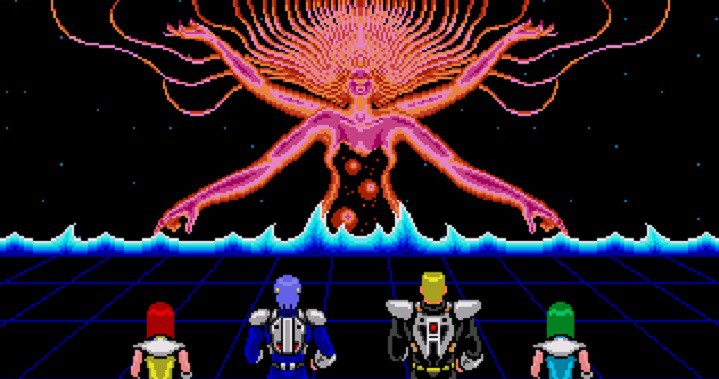
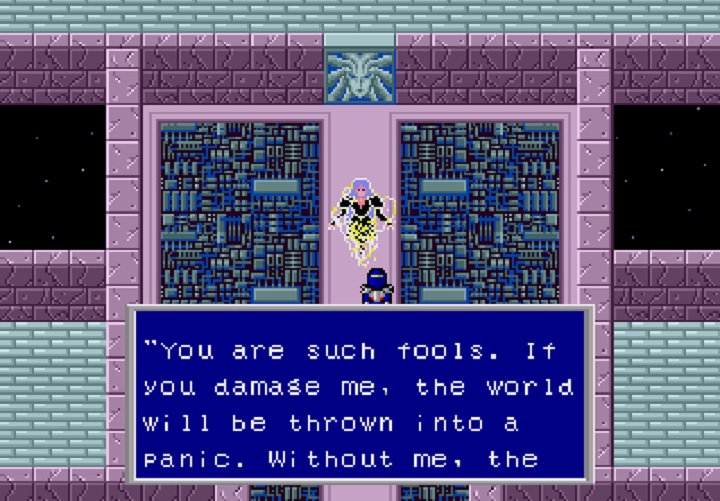
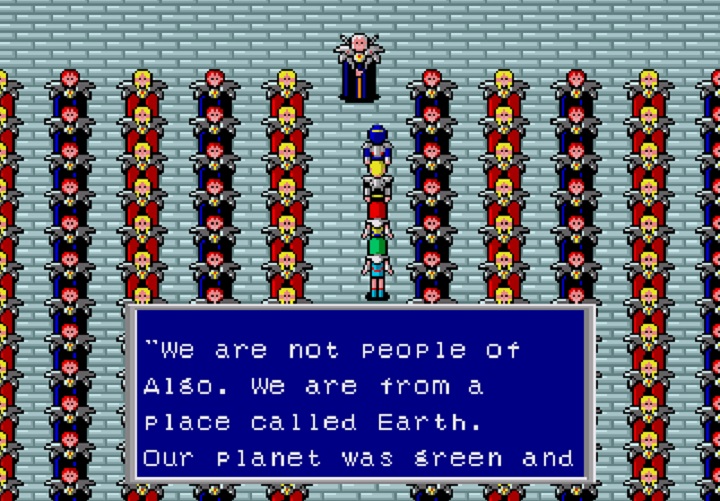
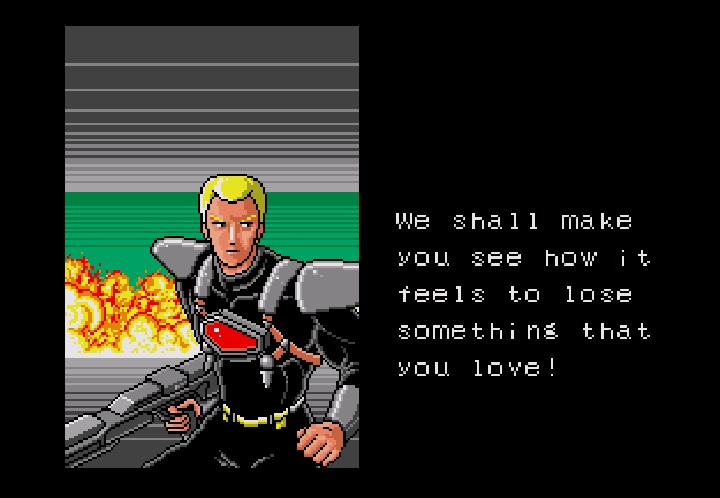
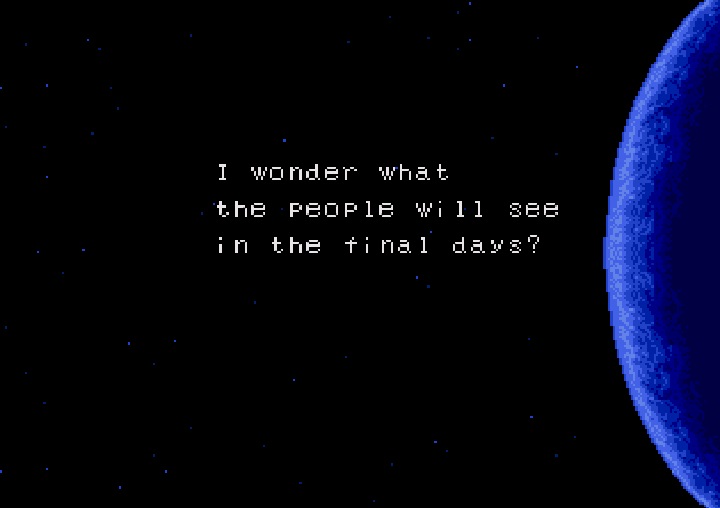
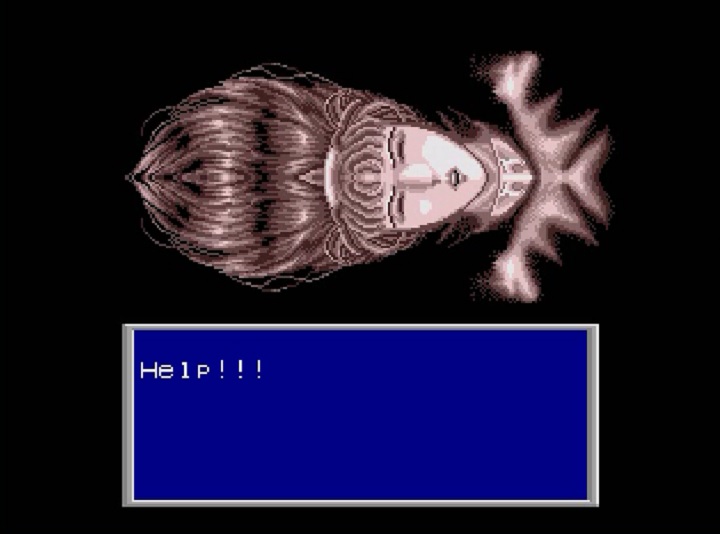
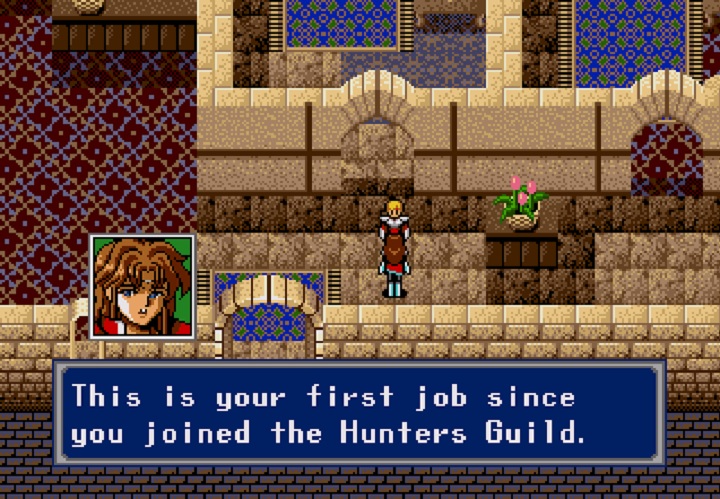
Phantasy Star was absolutely my favorite RPG series as a child. I used to play the original game start to finish, and then just play again once I beat it. I once helped my sister write a picture book for some college course she was taking, and it was basically the adventures of Alis, Myau, Odin and Noah. This was all when I was like, six.
I watched a neighbor finish PSII, and we were both devastated by Nei’s passing. However, at the end, after vanquishing Mother Brain, and Lutz informed us there was someone else on the ship, we erred to the side of optimism, and thought perhaps Nei would be miraculously returned to us! Imagine our surprise. Phantasy Star II was actually my leas favorite of the group. The story was wonderful, and the gameplay was not bad, but it was far too hard for me as a kid, and the sheer number of dungeons/random battles was off-putting. I am glad I watched my neighbor finish it, but I’ve never felt compelled to get much past the battle with Neifirst on my own. Though finding the group of musk cats in one of the Dezorian dungeons brought a smile to my face.
I totally get people’s disdain for PSIII, but honestly, it might be the one I replayed the most. For starters it seemed significantly easier to me than II was, and the whole generations thing meant I could replay and sort of get a different playthrough (though the last generation is pretty much identical for each kid). While I loved Ayn and his sea blue hair, ultimately it was Nial’s children that would bring me back time and time again. Logically I know that that neon yellow hair that Lutz’s family had would look terrible in person, but man it spoke to me in a video game. Especially coupled with Aron’s striking black armor/cloak.
I’d have to say PSIV is the complete package for me, however. PSII had a great story, but the characters were a little flat, and while it was awesome there were so many of them, who didn’t use Ami, Rolf, Rudo and some fourth (it was always Anna for my neighbor, but I see Shir up in the screenshots)? And in some ways, I feel like Alis’ death was even more tragic than Nei’s, because you went on a quest to save her before finding out you were too late. And the moment at the end when you find Elysdeon and discover its history might have actually made me short of breath. Chaz was not my favorite protagonist ever, but he had plenty of personality, and his supporting cast was pretty great. The still anime cutscenes were revolutionary to me at that age, too.
I played both PSO and PSU, and I enjoyed them both for what they were, but Phantasy Stars they pretty much were not. I even remember when PSU was claimed to be a return to the story driven origins of the series, but the reliance on actiony combat and semi-randomized environments made it hard to really appreciate the similarities.
I am pretty sad there is nothing else quite like PS out there, but as I am currently going through SWTOR at the moment, it might be the closest I’m going to get. Lots of neon, planets, varied races, lazer swords, and science fantasy were what I originally loved about the Phantasy Star games, so I will take them wherever I can get them nowadays.
Hi @reluctantlyhuman, this makes me want to go back and play Phantasy Star IV as it’s been a really long time. I think Nei’s death struck me more because it was the first time I experienced a permadeath. in a game. That said, yes, the game was brutally difficult (I think I spent the middle hours in Dezo shocked at the fact that it was even harder than I remembered it when I turned the enemies back on). I really liked PSIII a lot too growing up, though I felt it hasn’t aged as well as II. Also, as much as I loved the idea of generations, after the way Dragon Quest 5 integrated it so well, I found III lacking, especially because I never felt a close bond between the families (fathers and sons, husbands and wives) Agreed, a part of me wonders why there aren’t games like the old Phantasy Star anymore. There are some good JRPGs on the 3DS, but nothing that moves me as much as Phantasy Star as a whole. It’s arguably one of the best series of gaming and I love how they all complement each other and fill a different aspect of the story. =)
Amusing fact – because she is a computer, Mother Brain is really vulnerable to Kain and his anti-machine skills.
You know, the guy you abandoned half a game ago because he was useless ;)
It’s quite a solid ending after you destroy her – a whole freedom in chaos versus slavery in paradise tradeoff. And then you see the Earthlings and realise that the whole set of problems here is OUR fault. Head explode.
PS3 tried hard – for a quick knock off it has some of the right feel, and also introduces cyborgs which we didn’t have before. Wren makes a triumphant return in PS4, though without the super transformy skills. The Aron ending also is a nice callback to PS2 – the ship passes through a black hole, and ends up orbiting Earth. Since the black hole sends them back in time, that gives Earth knowledge of Parma, so therefore they can go there to colonise it and trigger PS2 all over again. Stable time loops, wooo!
PS4 though I still find the best. From the myriad characters, all of whom (well except maybe Hahn, he’s still crap) can make a viable contribution at the finish, to the wonderful explanation of just what Dark Force is and why the destruction of Parma even happened. Turns out the whole solar system is a lock, and removing Parma acted to eventually free the Profound Darkness. Clever.
The dungeons are also much less “do it again stupid you need a map!”, and the grinding and level progression is far gentler. The sidequests from the Hunter’s Guild also serve to flesh out the world a lot – the guy who raises Sandworms for entertainment and accidentally creates Shai-Hulud for example, or the island of rappys and the cave of cats in Dezoris.
I also really like the cutscenes, the simple storyboards are really effective. Honestly more games should have gone down that route, basic art assets can be better than FMV if you get the story right.
I would love to see you replay ps4 as I too find it to be the best of the series. Though you are correct the ending of ps2 was great.
@Mayhem– I did not know about the Aron ending. That’s very cool and makes me want to play it just to experience that. re: Ps4, I loved those cutscenes as well. I still remember Rika seeing the sun and the outside world for the first time and her sense of wonder and awe. And finally, that ending of PS2 still blows my mind. Thanks for the insightful comment! =p
@dwcole– would love to do a Phantasy Star 4 walkthrough if there’s enough interest. I’m playing through Final Fantasy 9 next, but the game after that is still up in the air. Thanks so much!
@Mayhem: I just watched the Phantasy Star III Ending with Aron. That’s a real mind bender! lol Though they mean worm hole, not black hole, right? =p
https://www.youtube.com/watch?v=0kDx3kiul3g
@peter
Yes and no :)
The black hole is a threat in one of the other endings – Dark Force is leading them right into it. They are able to change course and set off to the third planet of a nearby star.
The second ending is exactly the same except they avoid crashing into a sun instead of a black hole.
In the ending above, they go through the hole, which acts as a wormhole back in time, and therefore also in space so that they are still near earth. Clever
In the last one they encounter the other ship destroyed here – the Neo Palm, which offers to help as it knew Dark Force was trapped on the Alisa III.
When I played I most liked the meeting the other ship ending, probably because Sean was a badass, but also because it is the only one where the other ship isn’t destroyed.
Looking back now though the wormhole one should really be canon, or as close as PS3 gets ;)
@Mayhem, thanks for clarifying- that makes sense, or at least as much sense as these things can make, lol. =) Is there one that is officially canon?
Id love to see a PS4 replay. Like I mentioned in an earlier post, I think PS4 is a superior game to PS2, but PS2 has alot more nostalgia value for me. PS2 was the first anime style RPG I played. The amount of data they could cram onto the genesis carts must have really increased in the 5 years between the two games, because PS4 is alot more immersive with cutscenes, sidequests and bigger maps.
I liked PS3, if only for the alternate paths/endings aspect and the backstory, but the gameplay was alot weaker. The spells (other than healing) were useless and they cut back on the battle animations and sfx. I did like the cyborgs and the transformable Wren unit was a cool addition. The music was memorable as well. I can still hear the dungeon music and castle music in my head.
@joyceman: The dungeon and castle music from PS3 were two of my favorites! I’d love to do a PS4 play through if there’s enough interest. I’m making my way through FF9 right now as well as FF13-2 which has been surprisingly entertaining, even if I have no idea what in the world is happening, ha ha.